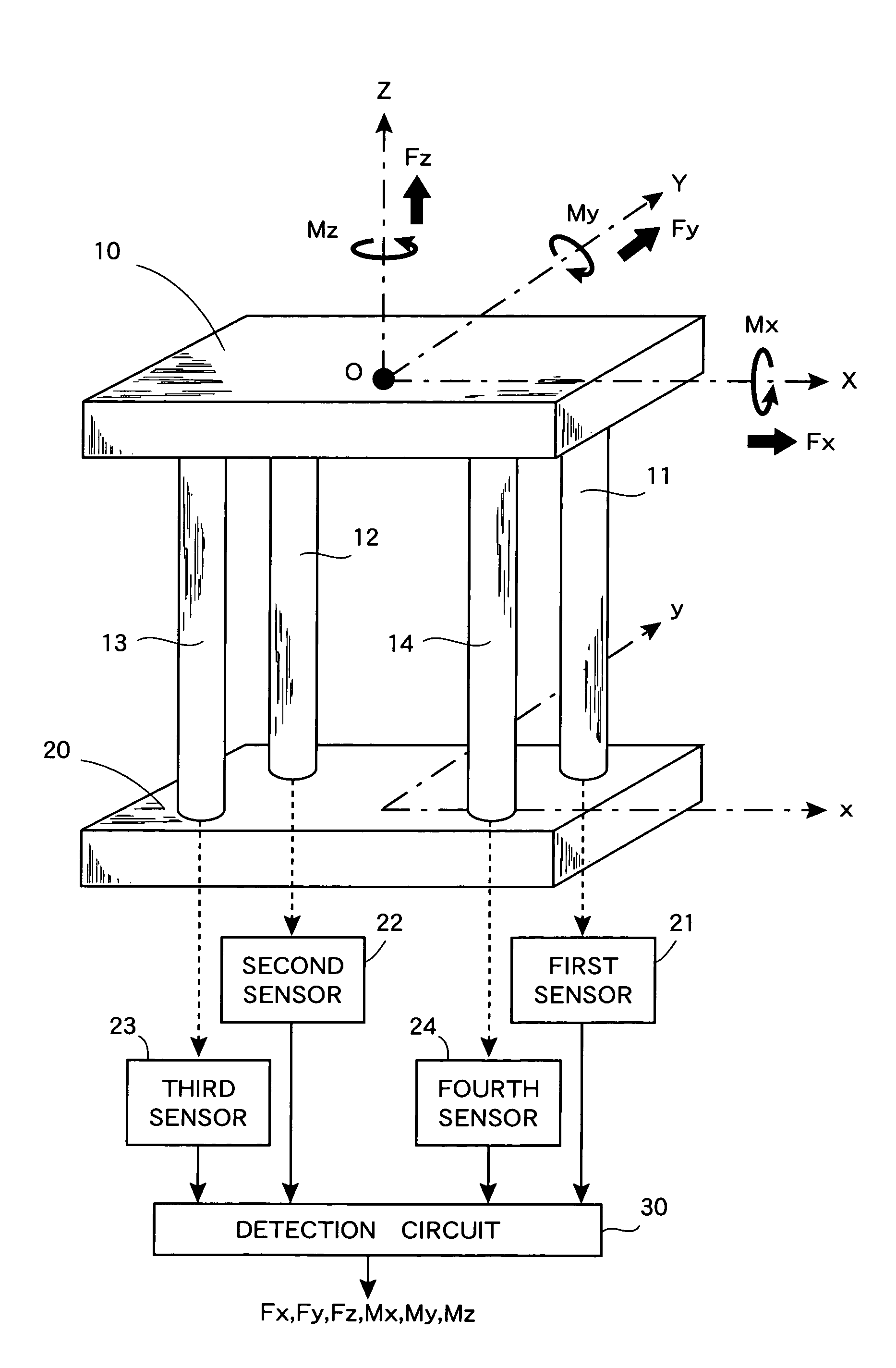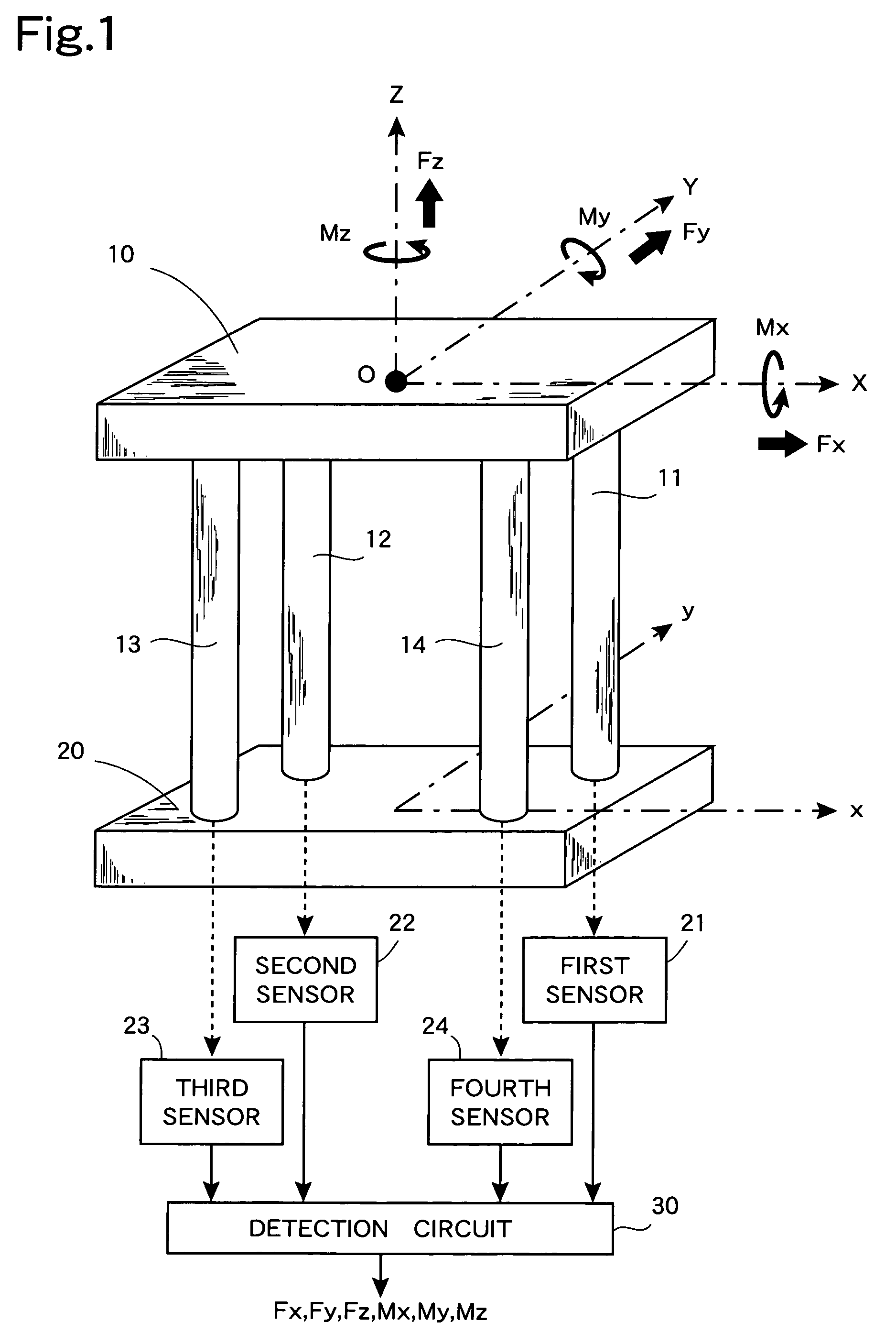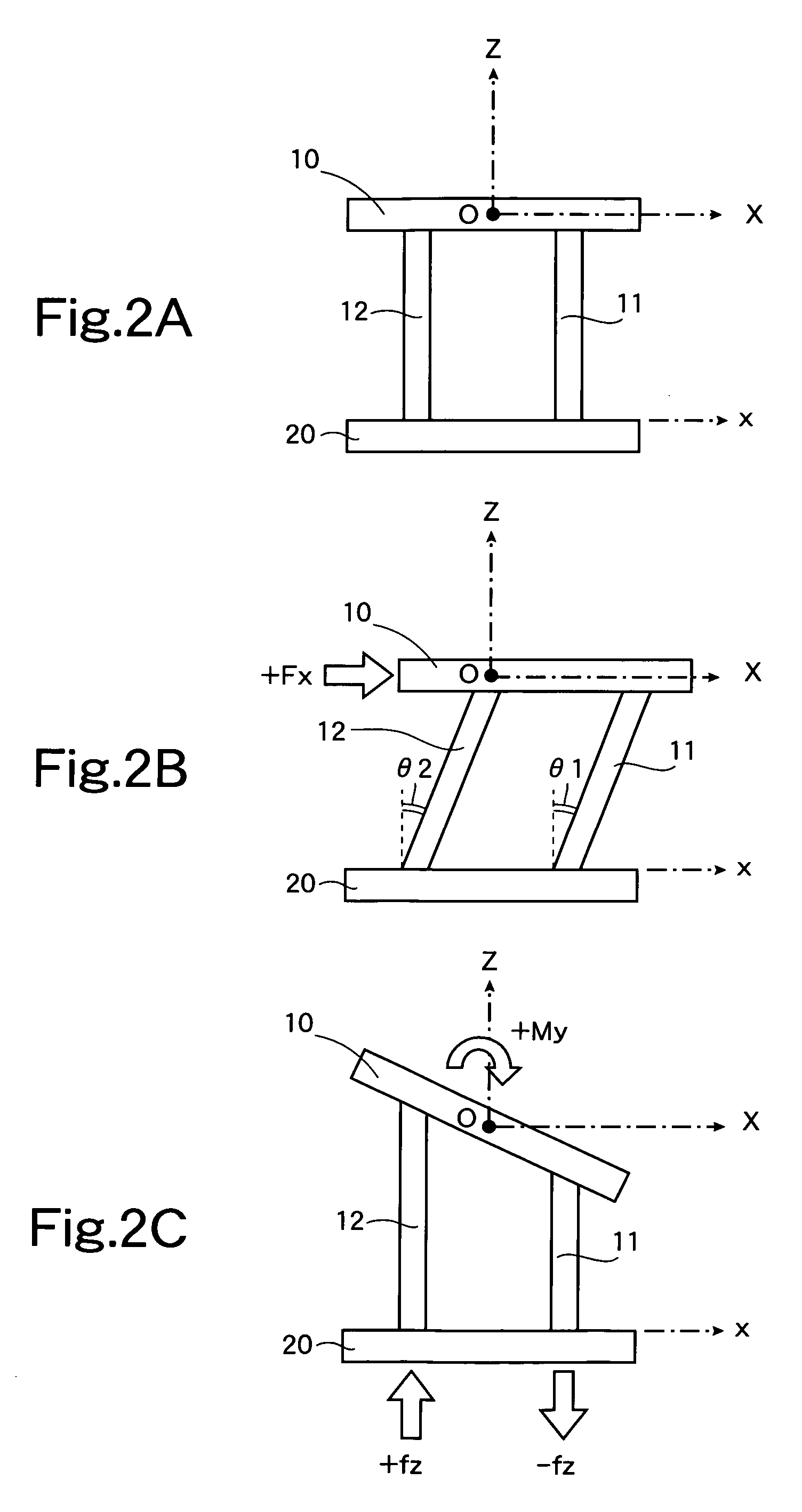Force-detecting device
a detection device and force technology, applied in the field of force detection devices, can solve problems such as a complex three-way system
- Summary
- Abstract
- Description
- Claims
- Application Information
AI Technical Summary
Problems solved by technology
Method used
Image
Examples
first embodiment
[0226]The major structural parts of a force detection device of this invention shall now be described using FIG. 9 to FIG. 13, the operation principles of this device shall be described using FIG. 14A, FIG. 14B, and FIG. 15, the wiring for performing the detection in accordance to these operation principles shall be described using FIG. 16 to FIG. 21, and an electrode configuration suited for the detection of all six force components shall be described using FIG. 22 to FIG. 26.
[0227]FIG. 9 is a top view of this force detection device of the first embodiment. FIG. 10 shows a side view in section along sectioning line 10—10 of this top view and FIG. 11 shows a side view in section along sectioning line 11—11. As shown in FIG. 10 or FIG. 11, the basic components of this force detection device are a force receiving member 100, an intermediate member 200, and a supporting member 300, and the basic form of each of these is a plate-like member having a top surface of square shape. FIG. 10 ...
second embodiment
[0333]An example of a configuration of fixed electrodes for enabling the detection of all six components of Fx, Fy, Fz, Mx, My, and Mz is shown for the force detection device of the second embodiment in the top view of FIG. 36 (top view of supporting member 300). Each of fixed electrode sets E10, E20, E30, and E40 is comprised of eight fixed electrodes and this is because specific fixed electrodes have been split according to use in order to enable the detection of all six force components.
[0334]Enlarged views of the fixed electrode sets E10, E20, E30, and E40, shown in FIG. 36, are shown in FIG. 37, FIG. 38, FIG. 39, and FIG. 40, respectively. In each of these enlarged views, the gray hatching are provided to illustrate the electrode shapes clearly and do not indicate cross sections. As illustrated in these Figures, fixed electrodes E15, E25, E35, and E45, which respectively form Z-axis displacement detection capacitance elements, are formed at the central parts of the respective f...
PUM
| Property | Measurement | Unit |
|---|---|---|
| receiving forces | aaaaa | aaaaa |
| force | aaaaa | aaaaa |
| flexibility | aaaaa | aaaaa |
Abstract
Description
Claims
Application Information
 Login to View More
Login to View More - R&D
- Intellectual Property
- Life Sciences
- Materials
- Tech Scout
- Unparalleled Data Quality
- Higher Quality Content
- 60% Fewer Hallucinations
Browse by: Latest US Patents, China's latest patents, Technical Efficacy Thesaurus, Application Domain, Technology Topic, Popular Technical Reports.
© 2025 PatSnap. All rights reserved.Legal|Privacy policy|Modern Slavery Act Transparency Statement|Sitemap|About US| Contact US: help@patsnap.com



